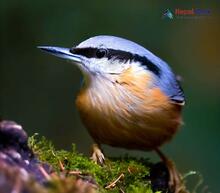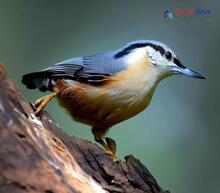The Sitta genus, commonly known as nuthatches, consists of small passerine birds that have captured the interest of ornithologists and bird enthusiasts alike. In this article, we delve into the intriguing world of nuthatches – from their origin and taxonomy to their evolutionary chain and presence across the globe, including Nepal.
Origin and Taxonomy of the Sitta Genus
Belonging to the family Sittidae, the Sitta genus consists of approximately 28 species distributed across the northern hemisphere. Their origin can be traced back to the early Oligocene epoch around 30 million years ago. The name “Sitta” is derived from the Ancient Greek word “sittē,” which means a bird referenced by Aristotle.
Systematics and Evolution Chain
Molecular studies have shed light on the complex genetic relationships within the Sitta genus and contributed to our understanding of their evolution chain. Nuthatches are believed to have originated in Eurasia and later expanded into other geographical regions. They can be divided into four distinct groups:
- The typical nuthatches (Sitta europaea and relatives) predominantly found in Europe and Asia.
- The red-breasted nuthatches (Sitta canadensis) native to North America.
- The blue nuthatches (Sitta azurea and relatives) found mainly in Southeast Asia.
- The rock nuthatches (Sitta tephronota and relatives) native to Central Asia, Eastern Mediterranean, and South Asia.
Genetic Phylogeny
Genetic phylogeny studies point out that the Sitta genus has undergone a number of speciation events throughout its evolutionary history. Through comparative analysis of mitochondrial DNA sequences from various species, researchers have been able to classify these birds into distinct clades based on their genetic relationships.
Species List and Characteristics
Among the many species of nuthatches, some noteworthy examples include the Eurasian Nuthatch (Sitta europaea), Red-breasted Nuthatch (Sitta canadensis), and Velvet-fronted Nuthatch (Sitta frontalis). These birds share several distinctive traits such as their short tails, powerful bills, zygodactyl feet, and vocalizations. They are primarily insectivorous but may also consume seeds and nuts during the non-breeding season. A prominent feature among Sitta species is their unique ability to descend tree trunks head-first – a remarkable adaptation that sets them apart from other birds.
Presence in Nepal
Nepal is home to six distinct nuthatch species which comprise a significant portion of its rich avian biodiversity. Some of these species found in the country include the Chestnut-bellied Nuthatch (Sitta cinnamoventris), White-tailed Nuthatch (Sitta himalayensis), and Beautiful Nuthatch (Sitta formosa). Birdwatchers and nature enthusiasts visiting Nepal can find these captivating birds in various habitats ranging from dense forests to open woodlands, adding an extra dimension of excitement to their outdoor adventures.
In conclusion, studying the Sitta genus provides valuable insights into avian taxonomy, evolution, and the remarkable characteristics these species possess. Moreover, understanding their presence in diverse geographical locations like Nepal helps raise awareness about biodiversity conservation in respective regions. As we continue to explore the enigmatic world of nuthatches, we are reminded of the fascinating intricacies hidden within nature.




